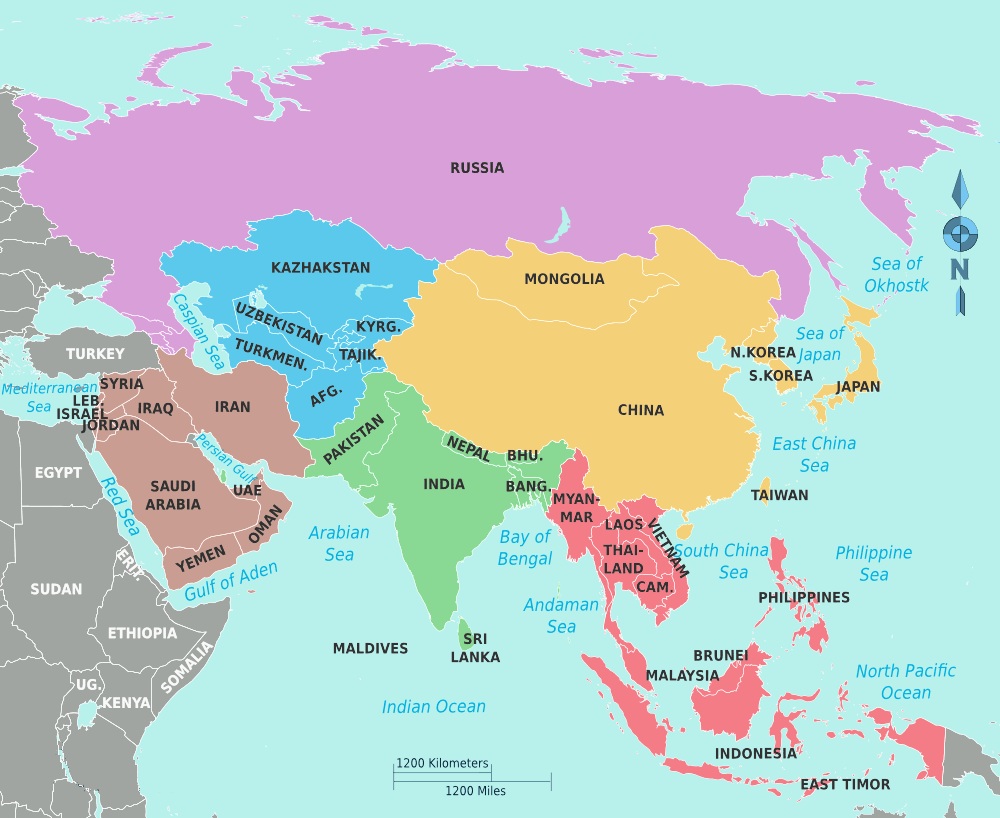
She wasn’t bored. Just restless between adventures. Atticus
Asia is Earth’s largest and most populous continent, located primarily in the Eastern and Northern Hemispheres. It shares the continental landmass of Eurasia with the continent of Europe and the continental landmass of Afro-Eurasia with both Europe and Africa. Asia covers an area of 44,579,000 square kilometres (17,212,000 sq mi), about 30% of Earth’s total land area and 8.7% of the Earth’s total surface area. The continent, which has long been home to the majority of the human population, was the site of many of the first civilizations. Asia is notable for not only its overall large size and population, but also dense and large settlements, as well as vast barely populated regions. Its 4.5 billion people (as of June 2019) constitute roughly 60% of the world’s population. The idea of a place called “Asia” was originally a concept of Greek civilization, though this might not correspond to the entire continent currently known by that name. The English word comes from Latin literature, where it has the same form, “Asia”. Whether “Asia” in other languages comes from Latin of the Roman Empire is much less certain, and the ultimate source of the Latin word is uncertain, though several theories have been published. One of the first classical writers to use Asia as a name of the whole continent was Pliny. The culture of Asia encompasses the collective and diverse customs and traditions of art, architecture, music, literature, lifestyle, philosophy, politics and religion that have been practiced and maintained by the numerous ethnic groups of the continent of Asia since prehistory. Identification of a specific culture of Asia or universal elements among the colossal diversity that has emanated from multiple cultural spheres and three of the four ancient River valley civilizations is complicated. However, the continent is commonly divided into six geographic sub-regions, that are characterized by perceivable commonalities, like culture, religion, language and relative ethnic (racial) homogeneity. These regions are Central Asia, East Asia, North Asia, South Asia, Southeast Asia and West Asia. There are many ways to define the geographical region of Asia. For the purpose of this subject guide, it encompasses China, Japan, Korea and Mongolia; South Asia, which includes the Indian subcontinent; Central Asia which includes Tibet; and Southeast Asia encompassing Cambodia, Indonesia, Malaysia, Thailand and Vietnam. The art and culture of East Asia are unified by powerful philosophical schools of thought and linguistic systems such as Confucianism, Neo-Confucianism, the classical Chinese language (including the traditional Chinese script), Mahayana Buddhism, Zen/Chan Buddhism, Daoism, Shintoism (mainly in Japan) and Shamanism. The traditional arts of the Indian subcontinent were made mostly to serve its indigenous religions, notably Hinduism, Buddhism, Jainism and Sikhism. Tibet and its art—largely based on Vajrayana Buddhism—are becoming increasingly better known as Tibetan Buddhism. Southeast Asia has diverse artistic traditions influenced by Animism, Theravada Buddhism, Islam, Christianity and Hinduism. Asian art is diverse and rich, spanning thousands of years and dozens of countries. It is known for its ritual bronzes, beautiful ceramics, jades, textiles, poetic painted landscapes, garden design, elaborate goldwork, extraordinary temples, shrines, pagodas and stupas, woodblock prints, shadow puppets and the highest art form in East Asian art—calligraphy.

“A fool who knows he is a fool has a little intelligence, but a fool that thinks he is intelligent is really a fool.”.
“A good well-lived today makes every yesterday a dream of a good future, and every morning is a vision of hope. “.
“A house without a child is like a tomb.”.
“A man in this world without learning is as a beast of the field. “.
“A sin that is confessed is less heavy to bear. A sin that is confessed is less heavy to bear”.
“A woman talks to one man, looks at another, and thinks about a third. “.
Asian proverbs and old sayings reveal many aspects of the cultural traditions of a society. Proverbs originated from indigenous humble folk and handed down over the centuries, generation to generation. Many proverbs serve as cautionary tales, warnings, and chastisement. Whether chiseled in stone or inscribed on papyrus, the message of the metaphor first evolved in Asia. Some of the earliest proverbs have survived for thousands of years, encapsulating lessons gleaned within particular societies and yet equally relevant in any other – as indeed they remain today.
“A woman’s appetite is twice that of a man’s; her sexual desire, four times; her intelligence, eight times.”
“Abstinence is the best medicine.”
“Agreement with two people, lamentation with three.”
“All we can hold in our cold dead hands is what we have given away.”

























